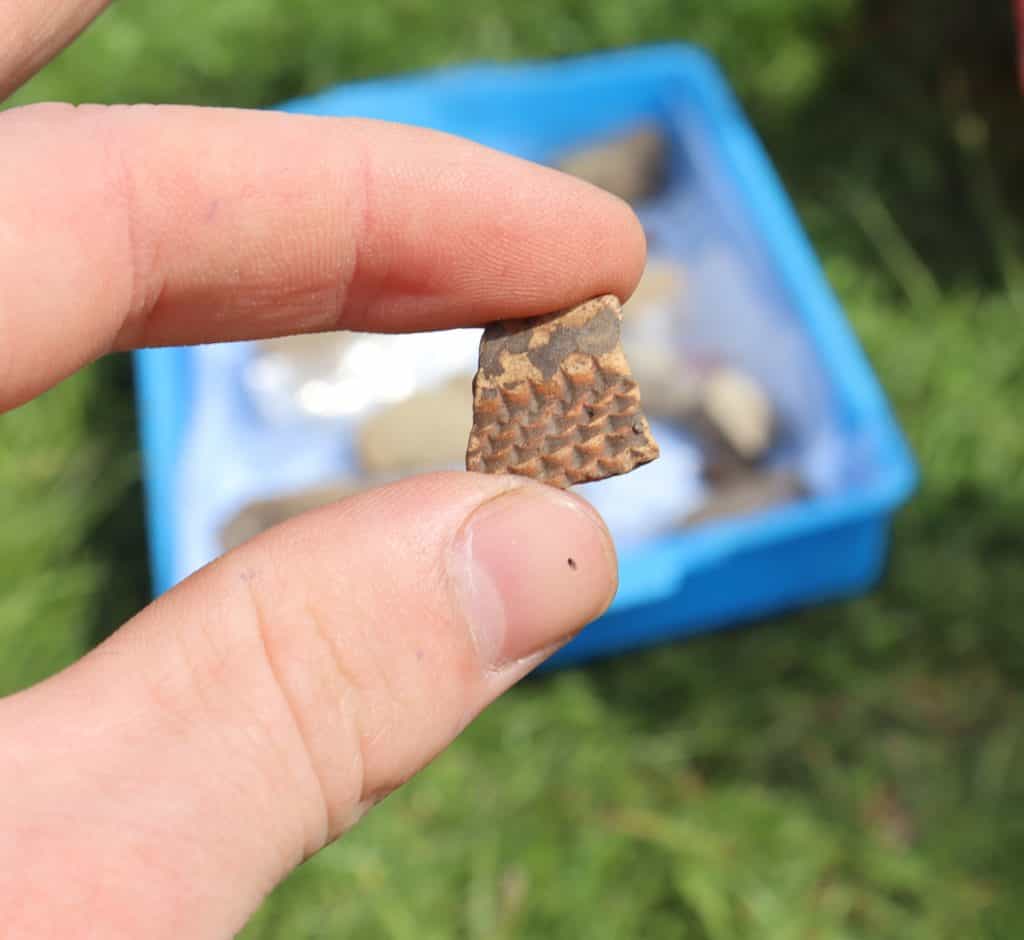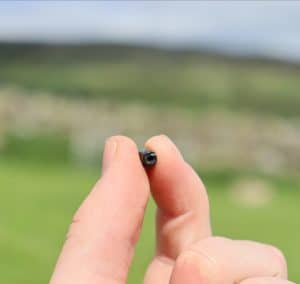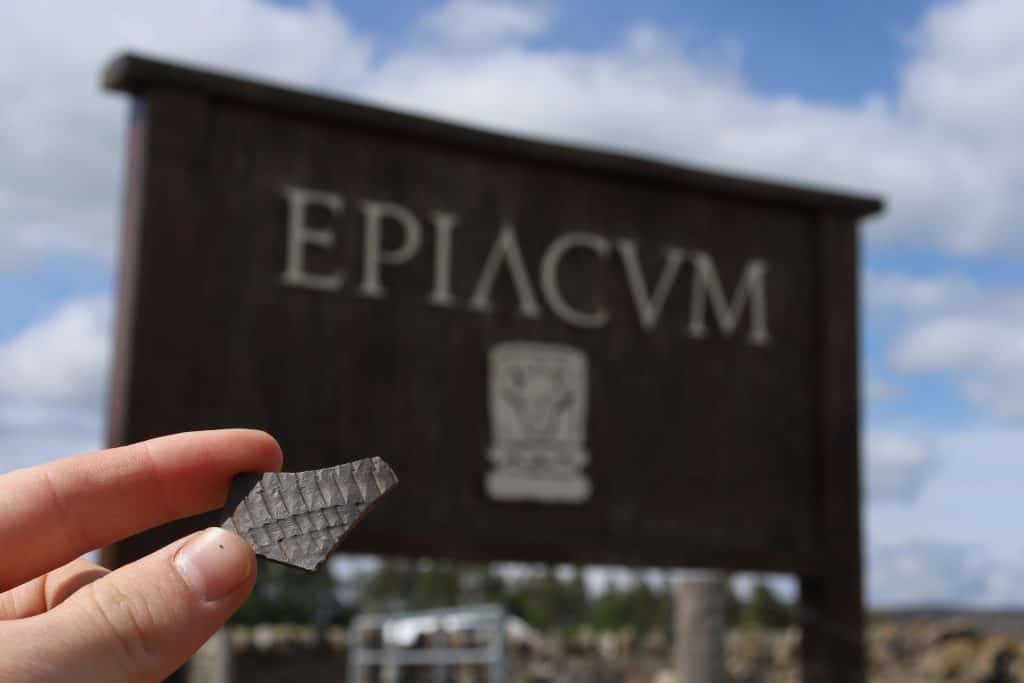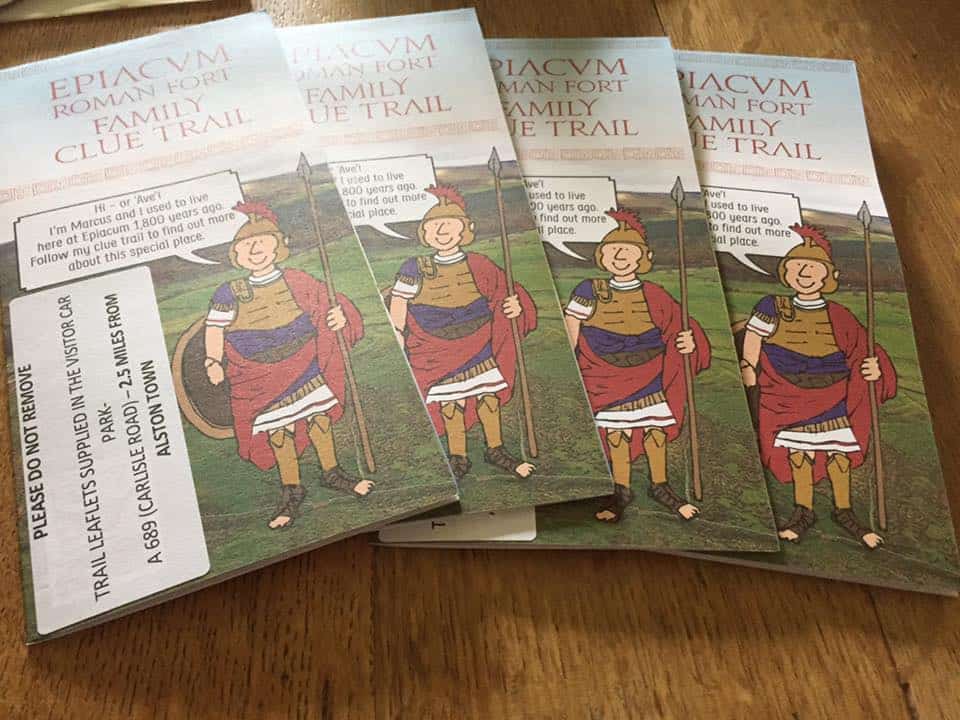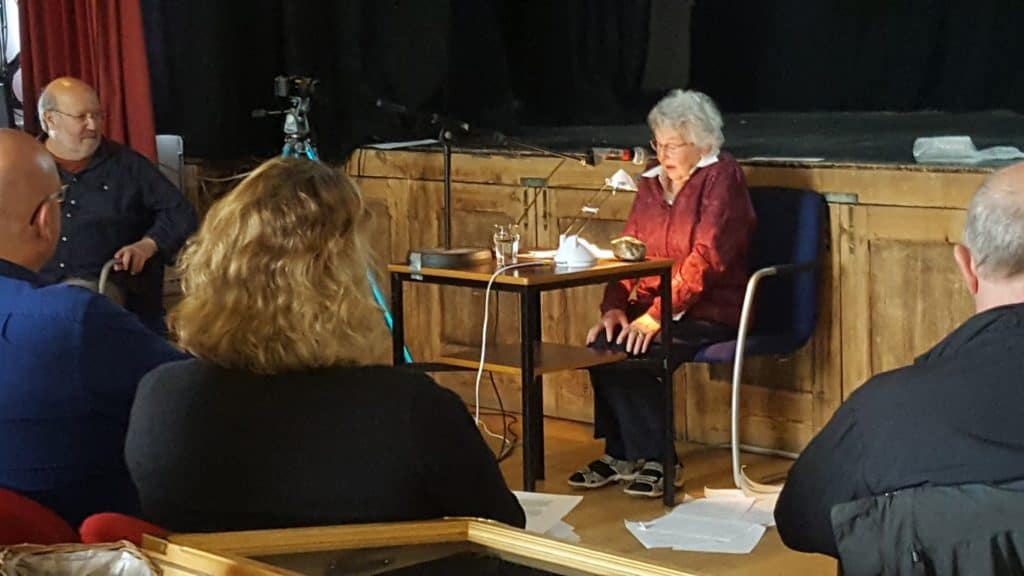Epiacum Heritage is happy to announce that specialists have now completed their analysis of all the finds from the Molehill Project. They looked at the material from the 2011-15 and 2023 seasons, producing reports and a catalogue. All will be made available next year, but we couldn’t resist sharing some of their conclusions now.
The assemblage is predominantly Roman and typical for a military site in the north. The pottery is largely of a third century AD date, though some of the Samian could possibly be from the late second century. Importantly, the pottery indicates that the occupation of the fort continued into the fourth century, including after AD 360. Two of the three coins were of second century date, but were so heavily worn that they may have been discarded as late as the early third century. The other coin can be dated to AD 270-90. Notable discoveries included the fragment of a rare mosaic glass vessel, the piece of an expensive third century military enamelled belt mount, a very rare key-handle in the shape of a dolphin head, and at least 4 glass and 2 jet beads from necklaces and bracelets worn by women.
Much more could be said, but we wouldn’t want to give too much away at this stage. Distribution maps of the different types of artefacts are currently being produced, and these will appear early next year in a full report. A publication for a major international journal is also being written. We would like to thank all the specialists- Alex Croom, Felicity Wild, James Gerrard, and Lindsay Allason-Jones for all their expert knowledge and hardwork. This research was made possible by the AONB who kindly funded it with a Farming in Protected Landscape Grant.
